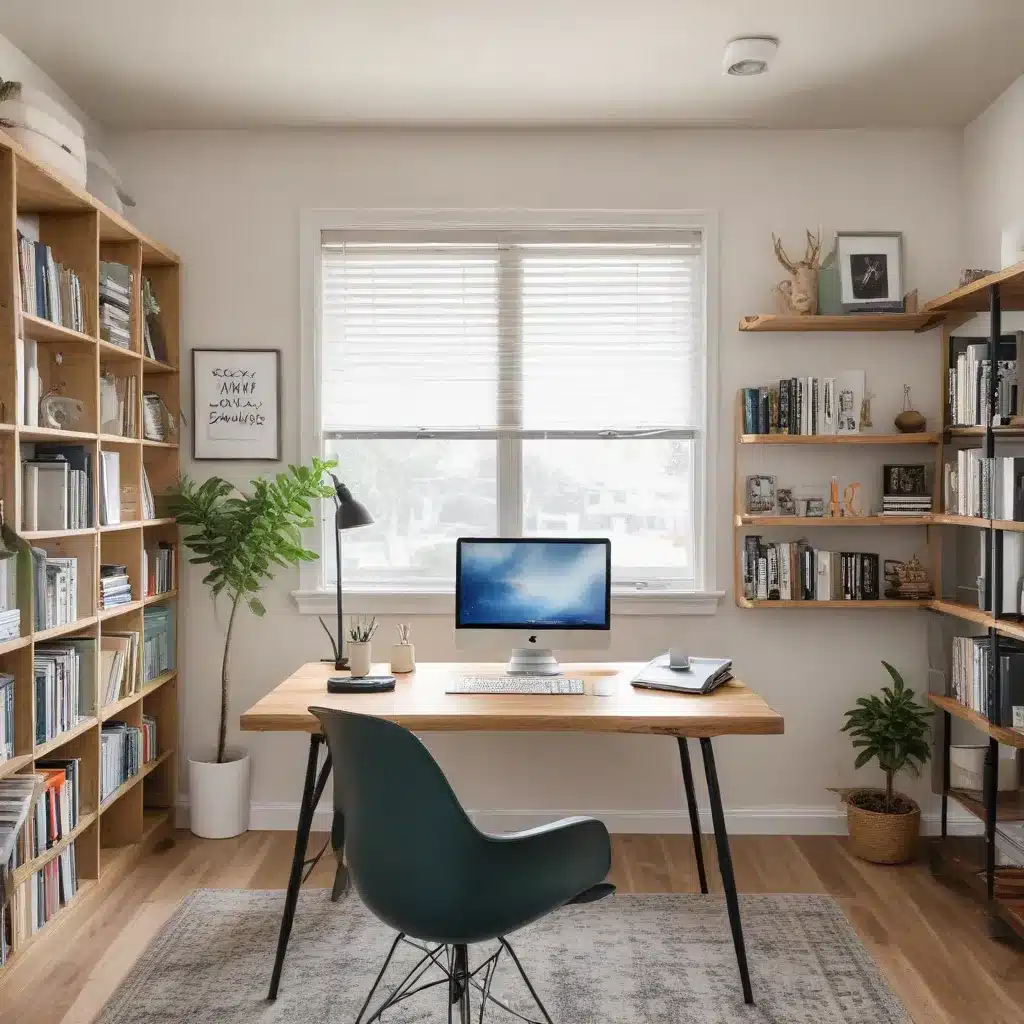Renovating for Remote Learning: Creating Productive Study Environments
As an experienced home improvement consultant and writer for Reluctant Renovator, I’ve seen firsthand the challenges that families face when trying to establish productive learning spaces within their homes. The COVID-19 pandemic ushered in a rapid shift to remote and hybrid learning models, leaving many households scrambling to transform their living spaces into conducive study environments.
However, with the right approach and a few strategic renovations, you can create a remote learning setup that supports your child’s academic success and overall wellbeing. In this comprehensive guide, we’ll explore budget-friendly projects, eco-friendly solutions, family-friendly designs, timeline management, renovation tips & tricks, small-space solutions, and time-saving hacks to help you craft the ultimate remote learning haven.
Designing Productive Spaces
The foundation of an effective remote learning environment lies in minimizing distractions and optimizing comfort. Let’s start by addressing the essentials for a distraction-free setup.
Essentials for a Distraction-Free Setup
Identifying and addressing potential sources of distraction is crucial. Begin by selecting a quiet, low-traffic area of your home, away from high-volume rooms like the kitchen or living room. Positioning the learning space near a window can provide natural lighting and a view, but be mindful of glare on digital screens.
Soundproofing is another key consideration. Strategically placing acoustic panels or using noise-cancelling headphones can help create a more focused atmosphere. If possible, consider a room with a door that can be closed to reduce external noise and interruptions.
Ergonomics and Comfort Considerations
Prolonged sitting can take a toll on a student’s physical and mental well-being, so prioritize ergonomic furniture and seating options. An adjustable desk or standing desk allows for periodic movement, while an ergonomic chair with lumbar support can help maintain proper posture. Encourage regular breaks and light stretching to prevent eye strain and muscle fatigue.
Home Office Transformation
In many homes, carving out a dedicated learning space may require repurposing existing rooms or nooks. Let’s explore some strategies for transforming your home office or underutilized areas into a productive remote learning environment.
Repurposing Existing Rooms
If you have a spare bedroom or home office, consider converting it into a multipurpose learning space. Incorporate modular furniture that can be easily rearranged to accommodate both individual and collaborative work. Invest in built-in storage solutions to keep the space organized and clutter-free.
Dedicated Workspace Creation
For those without a designated room, get creative with nooks, alcoves, or even a corner of the living room or bedroom. Utilize divider screens or curtains to delineate the learning area and provide a sense of privacy. Integrate wall-mounted shelves or floating desks to maximize the available square footage.
Flexible Multifunctional Setups
In smaller homes or apartments, finding the right balance between functionality and aesthetics can be a challenge. Explore adaptable furniture options and efficient space utilization strategies to create a remote learning setup that seamlessly integrates with your living space.
Adaptable Furniture Options
Look for multipurpose furniture pieces, such as height-adjustable desks, convertible sofas, or fold-away workstations. These versatile solutions can transform from study areas to leisure spaces, allowing the room to serve multiple purposes throughout the day.
Efficient Space Utilization
Maximize the potential of your square footage by incorporating wall-mounted storage, under-desk drawers, and vertical shelving. Utilize dual-purpose furniture like storage ottomans or nesting tables to keep the space organized and clutter-free.
Technology Integration
In the digital age, seamless technology integration is essential for effective remote learning. Let’s explore key considerations for equipping your space with the necessary tools and solutions.
Equipping for Online Lessons
Optimal webcam placement and high-quality audio and video are crucial for a professional-looking remote learning setup. Position your webcam at eye level to create a more natural and engaging video presence. Invest in a noise-cancelling microphone and high-definition webcam to ensure clear communication during online lessons and video conferences.
Enhancing Virtual Collaboration
Remote learning often requires interactive collaboration, so incorporate tools that facilitate seamless virtual engagement. Collaborative whiteboard applications allow students to share ideas, brainstorm, and work together in real-time. Presentation software with screen-sharing capabilities can enhance the delivery of lessons and lesson materials.
Lighting and Ambiance
Lighting and ambiance play a vital role in creating a productive and calming remote learning environment. Let’s delve into tailored lighting strategies and techniques for crafting a soothing atmosphere.
Tailored Lighting Strategies
Maximize the use of natural lighting by strategically positioning the learning space near windows. Supplement with task lighting, such as adjustable desk lamps or wall-mounted sconces, to provide focused illumination for reading and writing tasks. Experiment with dimmable lighting to control the overall brightness and create a more relaxing atmosphere.
Creating a Soothing Atmosphere
Curate a calming color scheme with hues that promote focus and relaxation, such as blues, greens, or neutrals. Incorporate personalized decor elements, like plants, artwork, or inspirational quotes, to make the space feel more inviting and reflective of your child’s interests.
Productivity Boosting Tips
Beyond the physical setup, establishing effective routines and strategies can significantly enhance productivity and well-being in a remote learning environment. Let’s explore ways to minimize distractions and cultivate focus and motivation.
Minimizing Distractions
Employ noise-cancelling techniques, such as white noise machines or ambient soundscapes, to create a soothing auditory backdrop. Establish clear boundaries by communicating with family members about the designated learning hours and enforcing a device-free policy during study time.
Cultivating Focus and Motivation
Develop a structured daily routine that includes designated study periods, breaks, and leisure activities. Encourage your child to take regular wellness-minded breaks, incorporating light exercises, mindfulness practices, or creative pursuits to recharge and maintain focus.
By implementing these strategies and renovations, you can create a remote learning environment that supports your child’s academic success, promotes their overall wellbeing, and brings a sense of purpose and focus to their educational journey. For more inspiration and resources, be sure to visit Reluctant Renovator.




